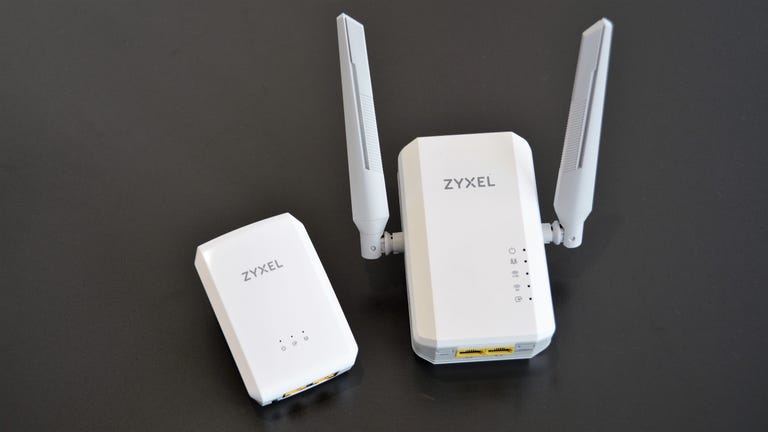 Why You Can Trust CNET
Why You Can Trust CNET Zyxel PLA5236KIT AC900 Powerline Wireless Extender kit review: A cheap alternative to Wi-Fi systems
The Zyxel PLA5236KIT is clearly affordable and will get the job done -- in the right circumstances.
If you need to bring internet to that far corner of your sprawling home and don't want to spend hundreds of dollars on a Wi-Fi system like the Google Wifi or the TP-Link Deco M5, you should definitely consider the Zyxel PLA5236KIT Powerline AC900 1,000 Mbps Wireless Extender kit. It does basically the job of a mesh system, extending your home network farther with relative ease, but at a much lower cost of about $85. (This kit is not yet on sale in the UK or Australia, but other Zyxel products are widely available. The US price converts to about £65 or AU$110.)
The Good
The Bad
The Bottom Line
The kit's performance isn't great and it can be a bit challenging for novices to set up, but if you have some patience and just want to quickly share internet access, it gets the job done. If your house is already wired with network cables, it's better to get a standalone access point instead.
The ZyXel PLA5236KIT includes a power line adapter and a power line access point (right).
How it works
The PLA5236KIT includes a power line adapter (model PLA5206 v2) and a power line Wi-Fi access point (model PLA5236). You first connect the adapter unit to an existing network -- a router or a switch -- and then plug it into directly a wall socket. After that, plug the access point unit into another wall socket at the far place. The two will connect to each other using the electrical wiring in between -- as long as it's no more than 900 feet (300 meters) in length -- as though it were a network cable, effectively extending the home network to the access point unit's location.
Note that, like all power line adapters, the kit only works well if your home has just one electrical wiring system, meaning the wiring is continuous and without circuit breakers in between. The units need to plug directly into a wall socket to work, so don't use them with a power strip or surge protector. Also, appliances, like ceiling fans or refrigerators, might adversely affect performance to a certain extent.
Clunky web interface
While setting up the hardware is as straightforward as mentioned above, setting up the PLA5236's Wi-Fi can be a challenge if you're inexperienced. Usually all you have to do is create a name for the Wi-Fi network and pick a password for it, but Zyxel somehow manages to turn this simple job into a real pain via a terribly designed web interface.
You can get to this interface by pointing a connected computer's browser to http://zyxelsetup/. Not all browsers will work, however. I first tried Firefox and most of the item label text didn't show. Even when you use a browser that works (like Chrome or Edge) the interface has an overwhelming number of items and settings that are not relevant to any home network. You have to dig around a lot of unnecessary nuisances to find what you need.
That said, if you're a savvy user or comfortable with web interfaces, you can probably figure things out rather quickly, but if you're a first timer, you could easily spend half an hour or more on this simple task.
The access point unit is quite bulky and will block adjacent wall sockets.
OK performance
The PLA5236KIT's performance was disappointing in my testing, mostly because Zyxel had set such high expectations. The company claims that the two units can connect to each other, via a power line connection at 1,000Mbps, the same as a wired Gigabit connection. In my testing, the best sustained speed I got was around 250Mbps, much faster than a regular Ethernet connection (100Mbps) but just a quarter of a real Gigabit connection and below average among power line adapters I've reviewed, including older models from Zyxel.
CNET Labs power line performance
As a Wi-Fi access point, interestingly, the PLA5236KIT can work in one of three modes: Range mode (2.4GHz band only), Performance mode (5GHz band only) and Mixed mode (dual-band). No matter which mode I picked, I got basically the same performance. At a close distance, it registered sustained Wi-Fi speeds of around 150Mbps. At some 60 feet away, it averaged just around 40Mbps. These were slower than the majority of routers and Wi-Fi systems I've tested.
Should I get it?
The PLA5236KIT is definitely one of the most affordable ways to extend your existing home network, but you get what you pay for. As long as you don't expect much, or don't need to do more than share a moderate cable or DSL broadband connection, it can be a great deal. But if you want anything more than that, check out one of these networking devices instead.


